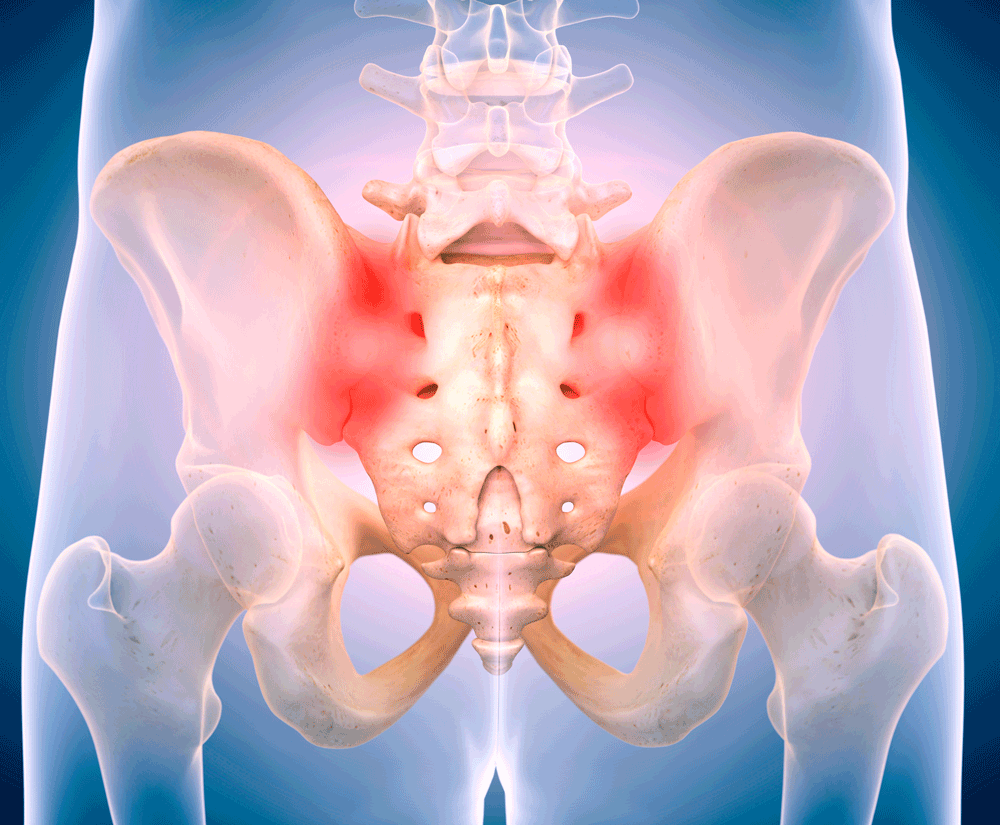If you are looking for lower back pain treatment in Hanford, this recent research study may be of interest to you. The authors reported that several physical therapy treatments reduce pain and disability in patients with a common lower back condition. They reported that a joints at base of the spine, the sacroiliac joints, are frequently responsible for pain.
Lower back pain (LBP) continues to be one of the biggest health problems in the world, as 70-85% of the population will experience it at some point in their lives. About 90% of all patients with LBP will have a good prognosis, regardless of the treatment they receive, but the other 10% will go on to experience chronic, or long-term pain and disability. This often leads to individuals missing work due to their condition, and for many of them, the cause of the pain can be attributed to one or both sacroiliac joints.
The Sacroiliac Joints Can Be a Source of Pain for Some
The sacroiliac joint connects the sacrum bone at the base of the spine with the ilium, the uppermost part of the hip bone. Sacroiliac joint dysfunction (SIJD) is a condition in which this joint does not move properly, and it is a common cause of back pain that occurs in up to 30% of LBP patients. There are several treatments available for SIJD, such as physical therapy, which can include a variety of interventions.
Although physical therapy is often used to treat SIJD, research is lacking and it’s not completely clear just how effective it is for the condition. For this reason, a powerful study called a systematic review was conducted to evaluate the possible benefits of physical therapy for SIJD.
Six medical databases searched for appropriate studies
To conduct the review, researchers performed a search of six major medical databases for relevant studies. In particular, they were looking for studies that assessed the effectiveness of various physical therapy interventions for patients with SIJD for more than three months who did not have spinal surgery. This search led to 1,114 studies being identified, but only nine of these fit the necessary criteria.
Four studies used manipulation as the main physical therapy intervention, three of them used exercise and another three used kinesiology tape. Manipulation is a form of hands-on intervention in which the therapist manipulates joints and other structures to relieve pain, while kinesiology tape is applied to the painful area in order to bring about similar changes.
Here is the Conclusion that the Authors Published
The results showed that physiotherapy interventions are effective in reducing pain and disability associated with SIJD, with manipulation being the most effective approach and most commonly used within physical therapy clinics. [Conclusion] Manipulation, exercise and kinesio tape are effective in the treatment of pain, disability and pelvic asymmetry in SIJD.
Reference- https://www.ncbi.nlm.nih.gov/pubmed/28932014
Manipulation found to be the most effective of all treatments
Results showed that all three physical therapy interventions of manipulation, exercise and kinesiology tape were beneficial for reducing pain and disability, and for restoring normal symmetry of the pelvis in patients with SIJD. When the interventions were compared to one another, it was found that manipulation was the most effective of all three at reducing pain and improving functional abilities.
These findings strongly suggest that physical therapy is indeed supported as an effective treatment for SIJD patients. Researchers behind this review therefore recommend that anyone affected by LBP that may be due to SIJD should consider seeing a physical therapist for a comprehensive treatment program that includes manipulation to address their pain and disability.
We Treat Lower Back Pain and Sacroiliac Dysfunction in Hanford on a Daily Basis
If you would like to learn more about our all-natural, hands-on approach, contact us for an initial evaluation. Most insurance plans cover physical therapy.
Click here to visit our contact page.
–As reported in the September ’17 issue of The Journal of Physical Therapy Science

